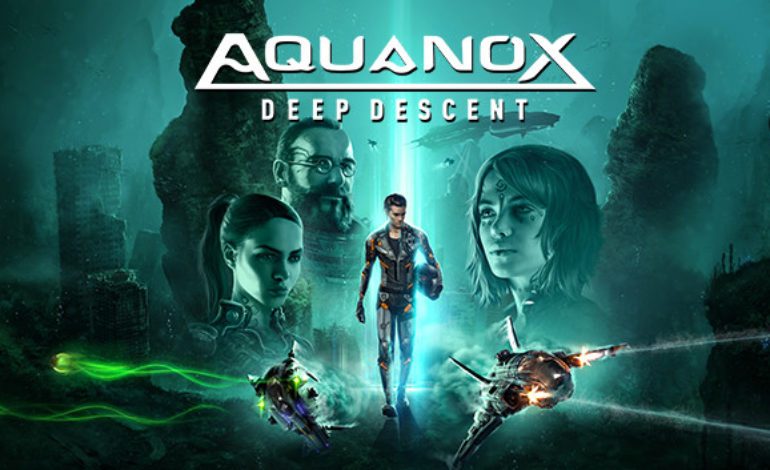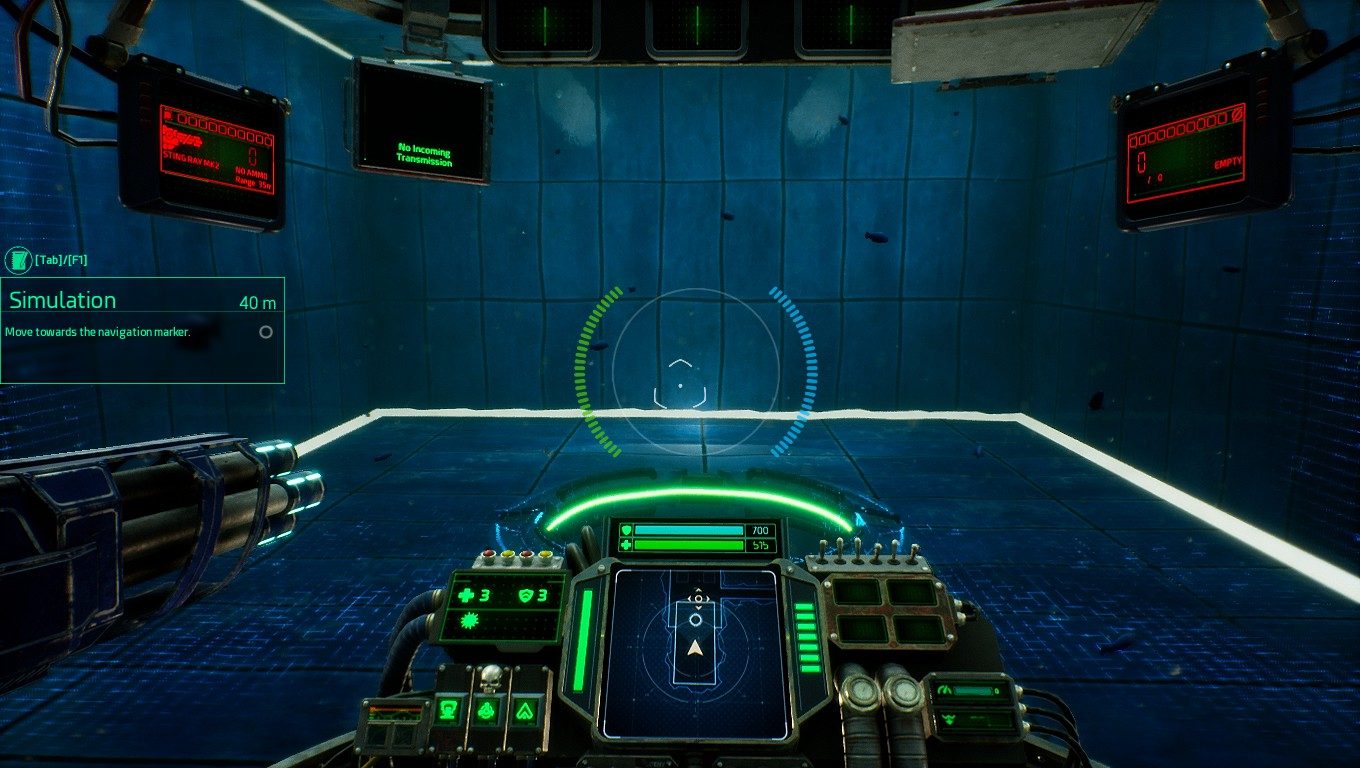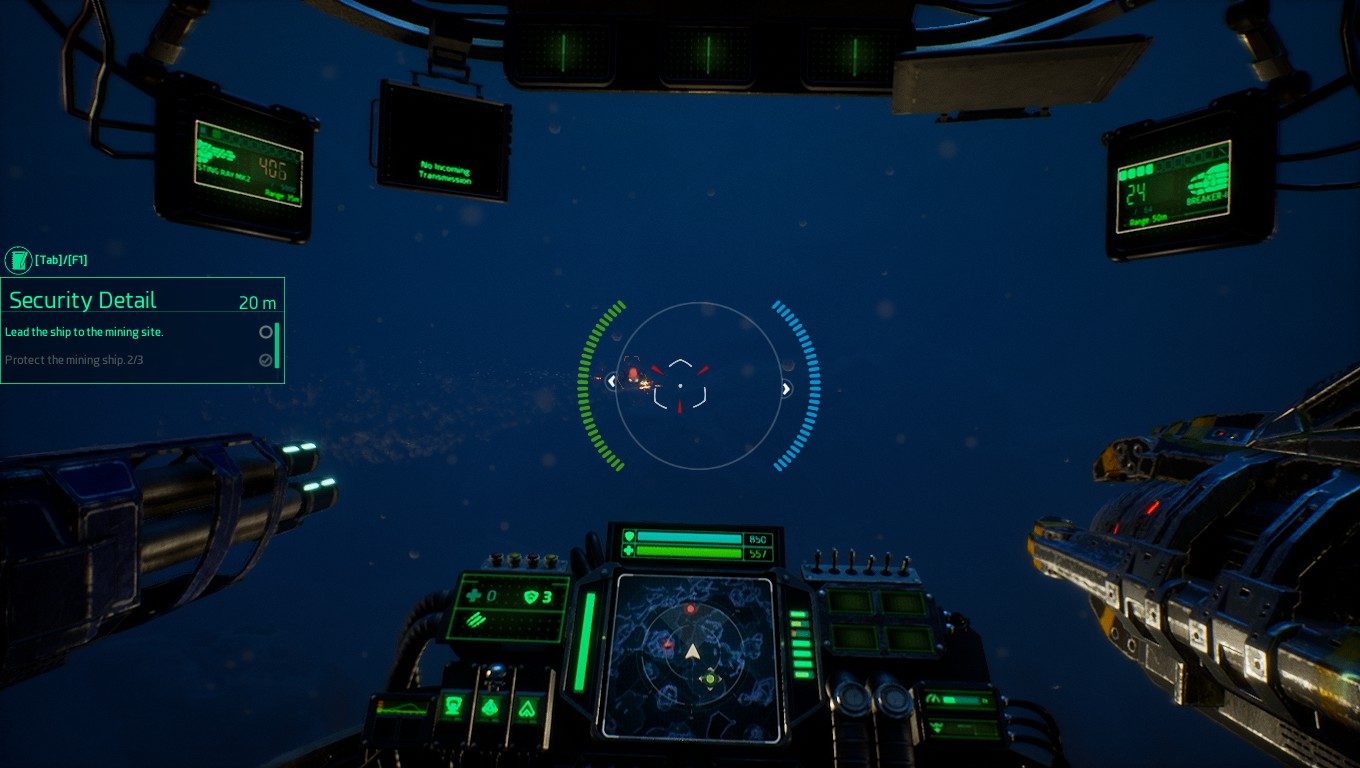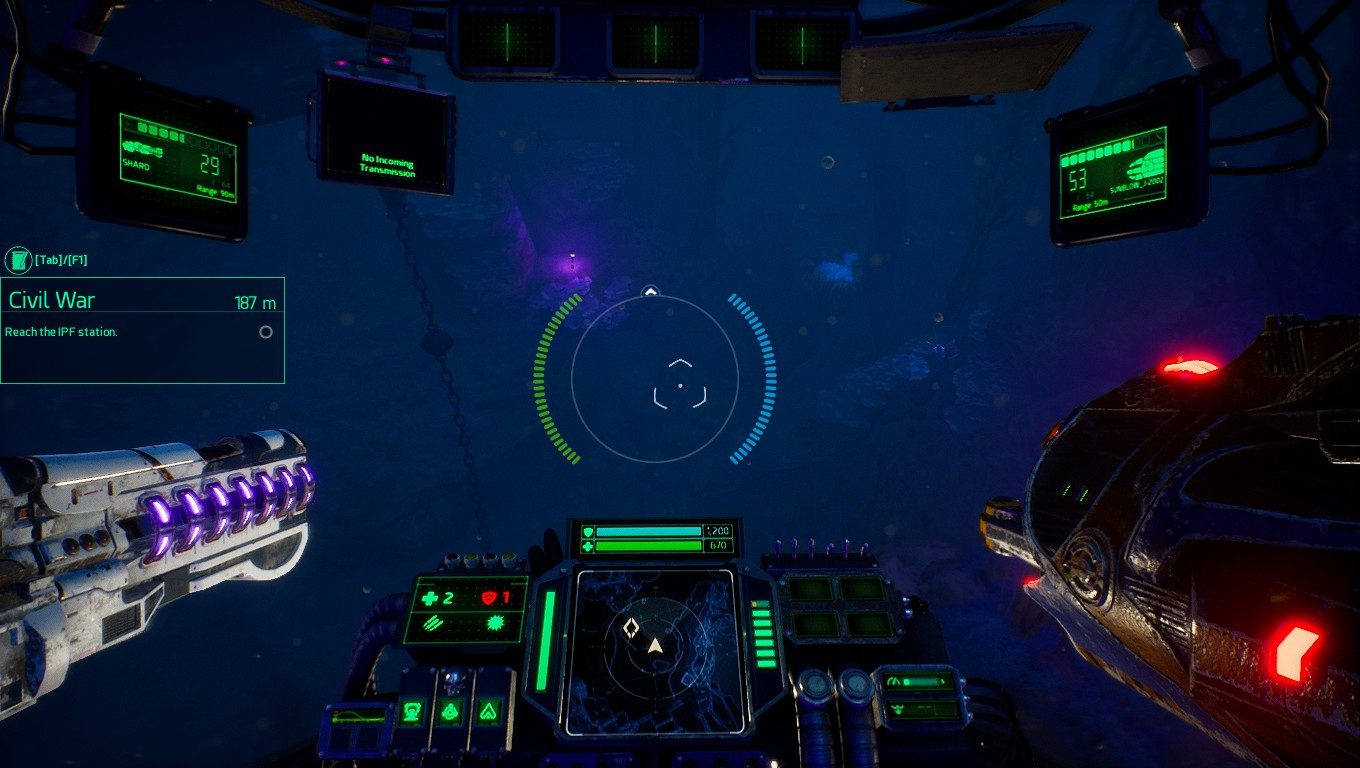

I have to admit that the Aquanox franchise was not on my radar before the release of THQ Nordic’s Kickstarter project, Aquanox: Deep Descent. That being said, I always appreciate when developers give long-dormant franchises a second chance, so Deep Descent could have been a fun modern revival. Unfortunately, the end product leaves a lot to be desired. While the gameplay shows promise, Deep Descent is otherwise hamstrung by a bland campaign lacking in polish.
At its core, Deep Descent is a first-person underwater vehicular shooter. This genre is fairly underrepresented in today’s market, so it’s fortunate that the basic controls and gameplay functions of Deep Descent are its best aspects. The controls initially take getting used to since many keys on the left side of the keyboard have some kind of function mapped to them, but they work well once they click. Mapping the left and right weapons to the left and right mouse buttons respectively is simple and intuitive, and blasting down enemy ships while aiming and strafing around them feels decently satisfying. Players are given a significant amount of customization options, including several different weapons, upgrades, and ship types, which all give plenty of opportunities to personalize the experience. Problems do arise once players acquire a large number of weapons, however. Cycling through weapons is entirely linear, so if a player skips past a weapon they wanted to equip, they have to go through their entire weapon selection before landing on it. This can get very frustrating in hectic firefights, as players will be left open for a potentially significant amount of time while they clumsily cycle through their weapons. Aside from this issue, it’s easy to appreciate the work that went into making the core gameplay feel as good as it does.


Unfortunately, the controls and customization features are the only truly good aspects of Deep Descent‘s gameplay, as the rest of it feels woefully underdeveloped and unpolished. In particular, the exploration comes across as an afterthought. The game is split off into several different areas which are all fairly large and open. Despite the size of these environments, there is very little meaningful content within them. Other than a monument featuring the game’s Kickstarter backers placed late in the campaign, all that players can find while exploring are caches of materials and the occasional lore entry. Very few of these require players to meaningfully engage with the world in order to find them, as they are all shown ahead of time on the minimap. The game is also heavily reliant on waypoint markers to lead players to the next story event or quest item. These elements make exploration feel incredibly mindless; the best explorative titles require players to pay close attention to the environment around them to find secrets or landmarks, but there is little need to do that in Deep Descent since it indicates exactly where to go at all times. There is one notable instance where I had to look for environmental cues to succeed, but even then it involved a confusing, maze-like area that quickly grew tiresome.


Worse than the exploration is the mission design, which is dreadfully repetitive. Nearly every mission in Deep Descent involves shooting targets or finding something. The explorative missions suffer from the aforementioned over-reliance on waypoint markers, but the combat-centric missions are more disappointing since, ideally, they should showcase Deep Descent at its best. But even combat missions feel unfulfilling, and that largely has to do with its bafflingly low enemy variety. Despite the fact that the player faces off against a variety of factions, the game uses the same three or so ship designs for all of them. Enemy ships do adopt different weapon loadouts as the campaign progresses, but they usually don’t fundamentally change how you approach them. Players do encounter different types of nanofauna on occasion, but they all behave pretty much identically. The game also features a few boss encounters, but three of the four fights involve confronting the same creature with next to no changes. With so few enemies to work with, the game cannot mix and match different enemy types to provide unique, meaningful combat scenarios, so it usually resorts to increasing enemy numbers and placing additional conditions, such as protecting a friendly ship, to raise the challenge. The tedium is especially severe considering the game lasts around 15 hours on an initial playthrough. That playtime could have been cut to around a third of its current length, and the game would have been much better for it.
The game lacks polish in a few other areas. Opening the menu to craft items and ammo still leaves the game running in the background, leaving you open to getting killed if you do so within a firefight. This wouldn’t be so bad except this menu completely blocks the in-game action, so there’s no indication that the game isn’t paused before you get massacred by gunfire. Occasionally, when respawning after a death, a large black rectangle covers half the screen, which can seemingly only be removed by resetting the game. During the first ship-protecting mission, the friendly ship managed to get itself killed while I was exploring an area free of enemies, forcing me to lose a large chunk of progress for no good reason. Although these issues are not overly common, they are incredibly frustrating when they occur.


The game’s presentation lacks much creative spark. The game spends a lot of time on its story and world building, but it’s difficult to get invested when most of the characters’ personalities are so milquetoast and the environments are so sterile. I understand that the world is post-apocalyptic, but the underseas aesthetic provides opportunity for arresting visuals that are simply absent until the end of the game.
In the end, it’s difficult to recommend Deep Descent to anyone other than diehard fans of its genre. It’s decent on a surface level, but there’s not much to dive into.
Score: 4 out of 10
Reviewed on Windows 10 PC
Play games, take surveys and take advantage of special offers to help support mxdwn.
Every dollar helps keep the content you love coming every single day.
